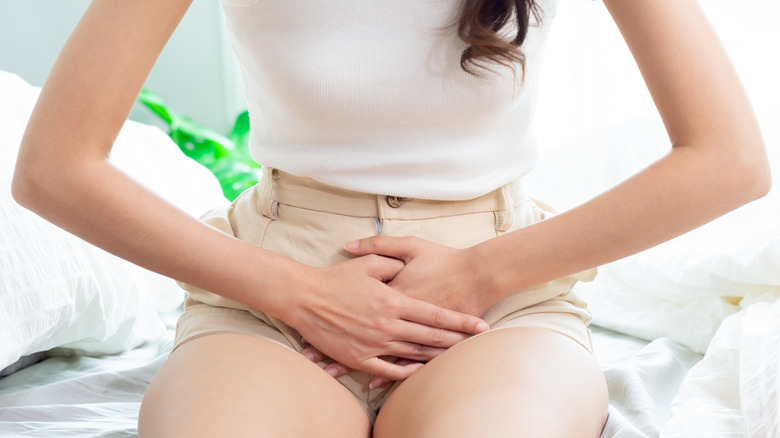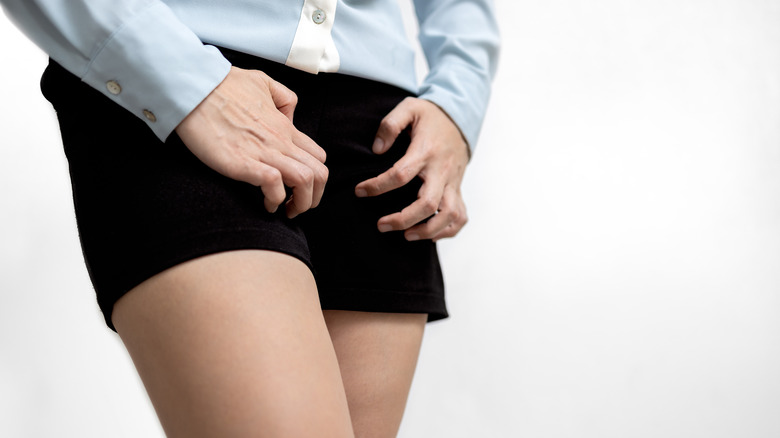The Real Difference Between UTIs And Yeast Infections
Most women can feel when there's something off down there. Discomfort, irritation, itchiness, and pain while urinating are common signs of an infection (via Healthline). Yeast infections and urinary tract infections (UTIs) are two of the most common types.
While they may seem quite similar, yeast infections and UTIs are different from one another. A UTI will often be accompanied by a number of uncomfortable symptoms including a painful burning sensation while urinating, the excessive urge to urinate, discoloration or odor, fever, chills, nausea, or pain in the pelvic region. A yeast infection on the other hand, can cause itchiness in the infected area, pain while urinating or during sexual intercourse, and vaginal discharge that is thick and white in color.
UTIs are caused by bacteria that gets into your urinary tract system. While sex can lead to a UTI, a person does not need to be sexually active to contract one. Other possible causes of UTIs include contact with stool or frequently holding in urine for too long. Yeast infections occur when there is an overgrowth of the fungus Candida albicans, which is naturally present in the body. Causes of yeast infections can be related to hormone fluctuations, side effects of certain medications, wearing tight-fitting clothing, stress, and high blood sugar.
Treating and preventing UTIs and yeast infections
Treatment for UTIs and yeast infections differ and usually require medication (via Medical News Today). UTIs are typically treated with antibiotics prescribed by a doctor. It's important to finish the entire course of medication even if symptoms subside early. Treating a yeast infection involves an antifungal medication. These are available as topical treatments such as creams that can be picked up from your local drugstore, or as oral treatments such as tablets. Some yeast infections may require prescription-strength antifungal medications.
There are several steps women can take to help prevent UTIs and yeast infections from developing. These include wiping from front to back after a bowel movement, peeing before and after sex, keeping well-hydrated, urinating when the need arises and not holding it in, avoiding tight-fitting clothing, and changing out of wet clothes like swimsuits and exercise clothing as soon as possible. It's also important to change feminine hygiene products regularly. Finally, women should avoid the use of vaginal cleaning products, particularly those that are scented.


